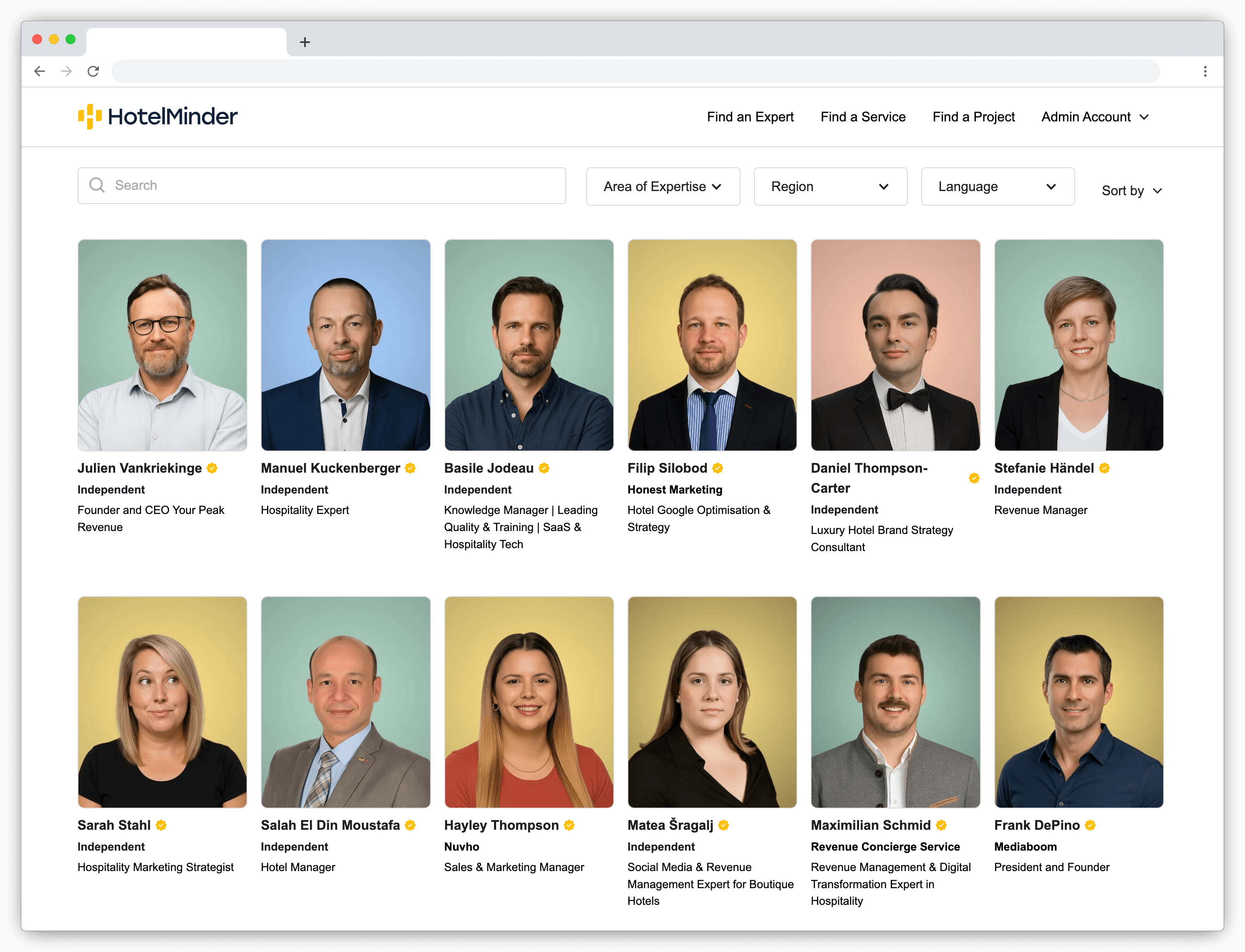7 Steps to Build a Reliable and Stress-Free Hotel Forecast
Stop guessing your demand. Learn the simple 7-step guide to hotel forecasting to build reliable budgets, optimize your pricing, and take control of your revenue.
Read on to learn more about what guest expectations look like today during the rise of one of the most popular technology trends – self-service technology.
By definition, guest expectations are behaviors or actions that guests anticipate while interacting with your property. They are formed based on guests’:
Guest expectations are formed before arrival and must be appropriately managed to ensure that expectations meet reality. Your marketing materials should accurately reflect what it’s like to stay at your property, and you should have a review strategy in place to gather and respond to feedback online. These two components are essential in setting the appropriate expectation before arrival.
Some expectations will always exist in the industry, like comfortable beds and a clean room. However, in recent years, new guest expectations have emerged that are here to stay. It’s critical to understand what your competitors are offering and what guests’ experiences have been like at other properties so that you can ensure you are delivering an experience that is up to industry standards.
If you’re unsure of what your guest’s expectations are – ask! Guest feedback is a key element for hoteliers to understand guest sentiment and deliver exceptional experiences. Consider sending mid-stay and post-stay surveys to see how guests felt about their stay and how it could be improved.
Guest expectations are must-have elements that guests anticipate while interacting with your property based on external information gathered through word of mouth, marketing materials, or reviews. Guest preferences are what individual guests like and dislike about your property.
It’s difficult to influence guest preferences as they are subjective and differ depending on the individual. Properties should focus on providing options for guests so they can pick and choose what best suits their preferences.
You may be wondering – what does self-service technology look like in hotels?
Self-service in hotels means providing guests with the option to use technology to perform certain tasks that were traditionally done for them by hotel employees, for example making reservations, checking in online, or using an app to order room service. Self-service is growing in importance among travelers. A recent survey of over 5,000 consumers found that 73% of respondents would be more likely to stay at a hotel that offers self-service technology that minimizes contact with staff and other guests.
It’s no surprise that self-service technology is gaining popularity in the hotel industry since it’s also become adopted by many other industries including banking, retail, restaurants, and air travel. Younger generations especially find face-to-face interactions time-consuming and inefficient and favor businesses with self-service options.
Self-service technology isn’t just an advantage for travelers but also for hoteliers and their teams. For properties, self-service provides benefits such as:
With HotelMinder, match with vetted hotel experts to solve your operational problems.

You can start by identifying your target guests' expectations and preferences to help understand where to start with hotel software and self-service technology. Here are a few common areas that hotels are prioritizing as part of their shift to self-service offerings.
Human interaction will always be an essential part of the hospitality industry, and self-service technology is freeing up employees’ time to deliver more meaningful and personalized interactions. Introducing self-service technology throughout the traveler’s journey will help meet guest expectations and increase opportunities for personalized experiences.
Cloudbeds is hospitality's only intelligent growth engine — a unified platform trusted by the world's most ambitious hoteliers across 150 countries.
HotelMinder brings value to hoteliers through a Knowledge Hub, a Technology Marketplace and one-to-one hotel management consulting services. With our 50+ years of combined expertise, we provide actionable solutions to critical business challenges, while establishing a relationship based on trust, engagement and mutual benefit. We help hotels meet and exceed their business goals through an in-depth analysis of consumer insights, business requirements and opportunities.
We are excited to announce the launch of Lobby, a brand-new network of hospitality consultants, which connects hospitality industry decision-makers with carefully vetted hospitality experts to deliver faster, more effective, actionable solutions to hoteliers’ top problems – launching to the public in October 2025.
If you are a hotelier who needs support, information or advice, or a hospitality industry expert who wants to help hoteliers achieve their business goals, you can enter the Lobby for free.
Your trust is our top priority. Whether you're choosing technology or connecting with an expert, we're committed to transparency. Here’s how we ensure you get unbiased, reliable guidance. Learn more about our promise.
Browse Knowledge Hub
Check out the latest insights, news and articles from the HotelMinder team, industry leading technology vendors and hospitality consultants.
Stop guessing your demand. Learn the simple 7-step guide to hotel forecasting to build reliable budgets, optimize your pricing, and take control of your revenue.
A hotel consultant debunks 3 common hotel technology myths. Learn why new tech isn't always the answer & how to truly optimize hotel operations for profit.
Access world-class hospitality expertise with Lobby. Our on-demand hotelier expert network offers proven solutions for revenue management, marketing, and technology challenges. Join free.
Learn Generative Engine Optimization (GEO) to boost your hotel's visibility on AI platforms like ChatGPT. Our guide covers websites, reviews, and OTAs. Get seen.
Discover more insightful articles in our Knowledge Hub and Partners Hub.
Sign up for expert insights, exclusive offers, and real solutions made for hoteliers like you.